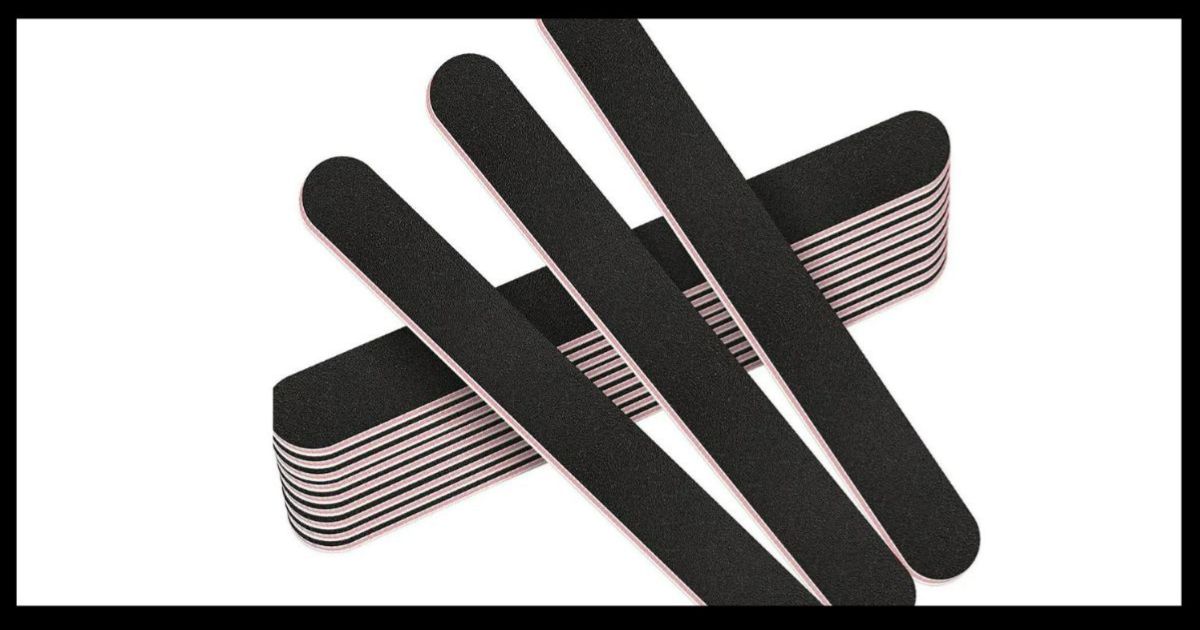Emery board are one of the most commonly used tools in nail care. Whether you’re into DIY manicures or simply looking to keep your nails healthy and smooth, emery boards offer a simple and affordable solution. This humble tool has been a staple in nail grooming kits for decades, but not everyone knows how to use it effectively or why it’s such a popular choice for nail care. In this article, we’ll dive deep into the world of emery boards, covering everything from their history and benefits to proper usage and care.
What is an Emery Board
An emery board is a small, flat strip of material covered in abrasive grains, typically made from emery—a type of fine-grained rock or synthetic abrasive. It is used primarily for shaping, smoothing, and filing down fingernails and toenails. One side of the board usually features a coarse grit for shaping, while the other side has a finer grit for smoothing and finishing.
A Brief History of the Emery Board
The emery board’s origins date back centuries, with early versions crafted from natural materials like pumice and sandpaper. Emery, a natural mineral, was initially used because of its effective abrasive properties. Over time, synthetic alternatives have also been developed, but the essential function of the emery board has remained the same.
How Emery Boards Work
The magic of an emery board lies in its dual-sided design. The coarse grit works by gently filing away excess nail length and rough edges, while the finer side helps to smooth out the nail surface and create a polished look. The texture of the emery helps to wear down the keratin in the nail, making it easier to shape and smooth without causing significant damage.
Why Choose an Emery Board Over Other Nail Files
There are various types of nail files on the market, from glass files to metal ones, but emery boards continue to be a favorite for several reasons:
Affordable: Emery boards are inexpensive and widely available.
Disposable: Since they are often made for short-term use, they can be disposed of after a few uses, making them more hygienic.
Gentle on Nails: Unlike metal files, which can be too harsh and cause nail splitting, emery boards provide a gentler approach.
Multiple Grit Options: The dual-sided feature allows for both rough shaping and fine finishing, making it versatile.
How to Use an Emery Board Correctly
Using an emery board may seem simple, but there are techniques that can help you get the best results without damaging your nails.
Start with Clean, Dry Nails: Before filing, ensure your nails are clean and dry to prevent splitting.
Use the Coarse Side First: Start with the rougher side to shape the nail, but avoid filing too much at once.
Avoid Filing Too Deep: Be cautious not to file too close to the nail bed, as this can lead to weakening of the nails.
Different Types of Emery Boards
Emery boards aren’t one-size-fits-all. There are various types available, each suited to different needs.
Standard Emery Boards: These are your everyday boards, typically around 7 inches long and featuring both coarse and fine grit.
Mini Emery Boards: These smaller versions are perfect for travel or quick touch-ups on the go.
Professional Grade Emery Boards: These are often thicker and more durable, designed for use in salons.
Curved Emery Boards: Designed to follow the natural curve of the nail, these boards make it easier to shape nails precisely.
How to Choose the Right Emery Board for Your Nails
Choosing the right emery board depends on your specific nail type and care needs.
For Natural Nails: A standard emery board with a medium grit is usually sufficient.
For Acrylic or Gel Nails: You’ll need a board with a coarser grit, as artificial nails are thicker and harder.
For Sensitive or Brittle Nails: Opt for a fine grit emery board to avoid causing further damage to fragile nails.
Caring for Your Emery Board
Even though many emery boards are disposable, you can extend their lifespan with proper care. After each use, brush off any nail debris and store your emery board in a dry, clean place. Avoid sharing your emery board with others to prevent the spread of bacteria or fungal infections.
When to Replace Your Emery Board
Emery boards are inexpensive and often meant for single-use or short-term use. Over time, the abrasive surface wears down and becomes less effective.
Benefits of Using an Emery Board
The benefits of using an emery board go beyond simple nail shaping:
Promotes Nail Health: Regular use can prevent jagged edges and nail breakage.
Easy to Use: Their lightweight design makes them easy to handle, even for beginners.
Gentle and Effective: Unlike harsher metal files, emery boards gently smooth nails without excessive pressure.
Hygienic: Disposable boards ensure that bacteria and fungi don’t accumulate over time.
Common Mistakes to Avoid When Using Emery Boards
While using an emery board is straightforward, there are common mistakes that can lead to nail damage:
Filing Wet Nails: Always ensure your nails are dry before filing to avoid weakening the nail structure.
Over-filing: Too much filing can thin out the nails, making them brittle.
Using Old Boards: Worn-out boards can cause rough edges and don’t file as effectively.
Emery Boa’ rd Alternatives: What Else Can You Use
If you don’t have an emery board handy, there are alternatives like glass files or metal nail files. However, these options tend to be more expensive or harder on the nails.
Conclusion
Emery boa’rds have stood the test of time as one of the most reliable tools for nail care. Their affordability, ease of use, and versatility make them a must-have in any grooming kit. Whether you’re giving yourself a quick manicure or simply maintaining your nail health, an emery board can help you achieve professional results at home.
FAQs
Can I reuse my emery bo’ard? Yes, but it’s best to replace it after several uses for hygienic reasons.
What grit should I use for natural nails? For natural nails, a medium grit (around 180-240) is ideal.
Is it safe to file my nails every day? It’s not necessary to file daily—over-filing can weaken your nails.
Can I use an emery bo’ard on artificial nails? Yes, but opt for a coarser grit to handle the thickness of artificial nails.
How long does an emery board last? It depends on usage, but most should be replaced after a few uses, especially if worn down.












